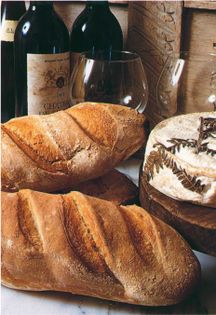Advertisement

Preparation info
- Difficulty
Medium
Appears in
By Tom Jaine
Published 2005
The ‘French sticks’ that masquerade as baguettes or bâtards (the name by which they go in Paris) have for too long made a nonsense of the great reputation of France for good bread. Hard and tasteless flours, mechanical processes and an incredible acceleration of the old-fashioned steady fermentation are largely to blame. What you get nowadays is little more than crust and air, with no flavour and little texture.
It is possible to recreate something of the beauty of this everyday, so


